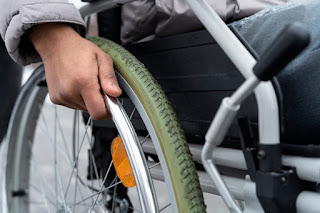Wheelchair Brake Maintenance and Troubleshooting
Many wheelchairs have brakes that require regular maintenance, and if yours does it you'll want to make sure you're up-to-date on the brake troubleshooting. Find out what to look for and what to do with your broken wheel chair brakes below!
Things You Should Remember When Working on a Wheelchair Brake
When working on a wheelchair brake, you should remember the following:
- Always wear safety goggles and a respirator to avoid inhalation of brake dust.
- Use a shop vacuum to remove any loose particles before starting work.
- Make sure all bolts, screws, and other fasteners are fully tightened before replacing parts.
- Check all cables for tightness and corrosion.
How to Fix a Brake in Ten Minutes
If you're experiencing problems with your motorized wheelchair brake, there are a few quick fixes you can try. Here are five of the most common issues and how to fix them:
1. The brake lever is stuck: If the brake lever is stuck, lubricate the moving parts with a light oil such as cooking oil or WD-40. Be sure to use a light oil because too much will make the problem worse. Apply pressure to the brake levers while moving the wheels in order to free up the lever.
2. The brake pads are worn down: If you notice that the brake pads have worn down significantly, it may be time to replace them. To replace the pads, remove the screws that hold them in place and pop them out. Check for shrapnel or rust on either side of the pad before replacing it – if any is found, replace both sides at once to ensure proper braking performance.
3. The cable is worn down: If you notice that the cable is frayed or worn down, it may be time to replace it. To do this, remove the screws that hold it in place and carefully pull it out from its housing. Make sure to replace both ends of the cable.
Other Troubleshooting Techniques
Other troubleshooting techniques for electric wheelchairs brakes may include: verifying that the brake is engaged by pressing down on the lever near the wheel; checking to see if the brake cable is tight; and verifying that the brake shoes are properly aligned.
Conclusion
If you're wheelchair-bound or use mobility scooters, it's important to keep your brakes in good condition. In this article, we discussed common brake problems and how to fix them. We also covered some maintenance tips that will help keep your brakes operating smoothly. Thanks for reading!


.jpg)

Comments
Post a Comment